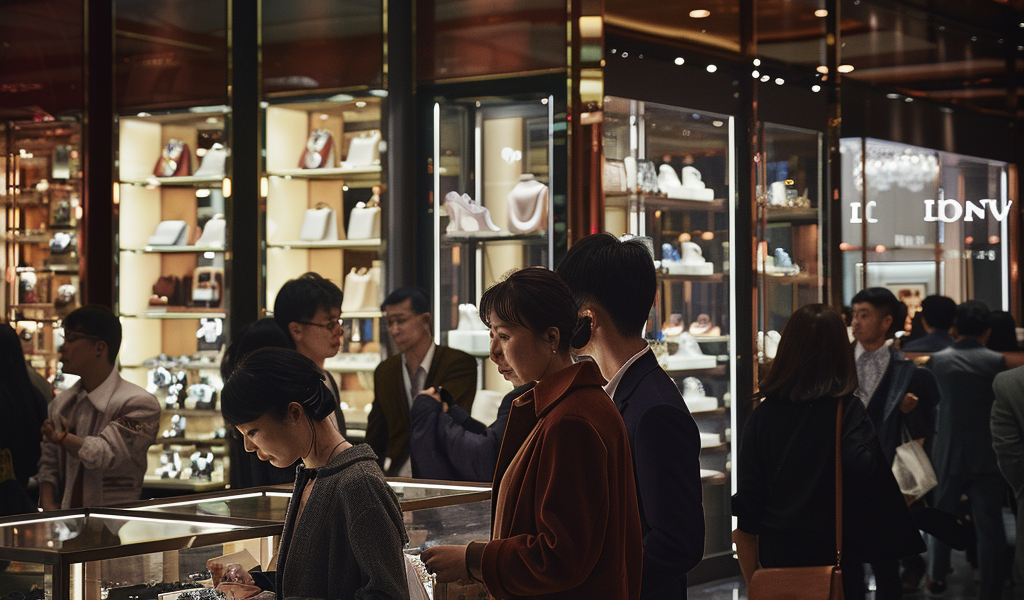The Asia-Pacific region has emerged as the global leader in the consumption of personal luxury goods, with Asian consumers driving significant growth both domestically and internationally. Cities like New York, Milan, and Paris have become popular shopping destinations for these affluent shoppers, who are eager to indulge in high-end products.
This trend raises intriguing questions, particularly given the strong influence of traditional values and religions in many Asian countries. Philosophies such as Confucianism and Buddhism emphasize modesty and frugality, creating a paradox where the desire for luxury seemingly conflicts with cultural teachings.
To explore this phenomenon, Rajeev Batra, a marketing professor at the University of Michigan’s Ross School of Business, led a research study examining the interplay between cultural values and luxury consumption in several Asian markets. The research involved a comprehensive analysis of seven lesser-studied Asian countries: Hong Kong, South Korea, Japan, Singapore, Indonesia, Malaysia, and Thailand.
Utilizing data from over 3,000 consumers between the ages of 18 and 64, the study investigated how various factors such as collectivism, religious traditions, thriftiness, and materialistic values influence consumption preferences. The findings, published in the Journal of International Business Studies, shed light on the complex relationship between these factors.
One of the key insights from the research is the central role of collectivism in shaping luxury consumption. In collectivist societies, individuals often prioritize the opinions and expectations of their social groups. This cultural trait can lead to a heightened interest in luxury items, as purchasing high-status goods becomes a way to gain social approval and fit into one’s peer group.
Interestingly, while religious and traditional values in these societies tend to promote thriftiness and discourage excessive spending, the influence of collectivism appears to counterbalance this effect. The study found that an increase in religious-traditional values correlates with a rise in thriftiness, which typically would lead to a decrease in luxury consumption. However, the positive impact of collectivism on status consumption is so significant that it outweighs the negative effects of thriftiness.
In essence, Asian consumers are able to reconcile their passion for luxury with the moral virtues of thriftiness. This duality is especially pronounced in collectivist cultures, where luxury consumption is not merely a display of wealth but is often viewed as a reflection of honor and status within the community.
Moreover, the perception of luxury consumption varies significantly between collectivist and individualist cultures. In Western societies, where individualism is more prevalent, luxury purchases can sometimes be criticized as being ostentatious or materialistic. In contrast, in collectivist cultures, indulging in luxury is often seen as a way to enhance one’s social standing and bring honor to one’s social group.
This research underscores the complexity of consumer behavior in Asian markets, revealing that the increasing appetite for luxury goods does not necessarily indicate a shift toward Western individualism. Instead, it highlights a unique cultural dynamic where traditional values coexist with modern consumption patterns, creating a rich tapestry of consumer motivations.
As the luxury market continues to expand in Asia, understanding these cultural nuances will be essential for brands seeking to connect with this diverse and influential consumer base. Marketers must consider the intricate relationship between collectivism, tradition, and luxury consumption to effectively cater to the desires and values of Asian consumers.
In summary, the interplay between cultural values and luxury consumption in the Asia-Pacific region presents a fascinating landscape for researchers and marketers alike. As Asian consumers navigate their identities through luxury purchases, they simultaneously uphold the values of their communities, creating a unique consumer culture that is both traditional and modern.





